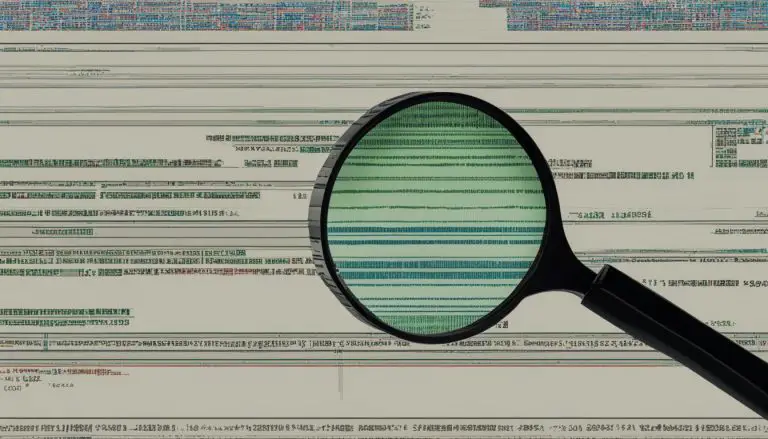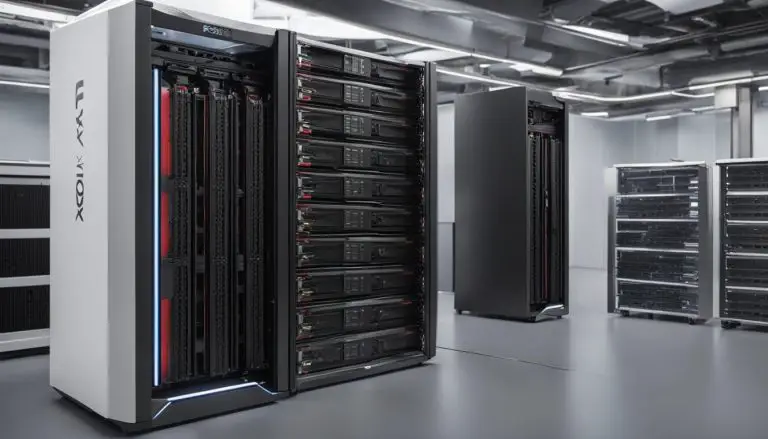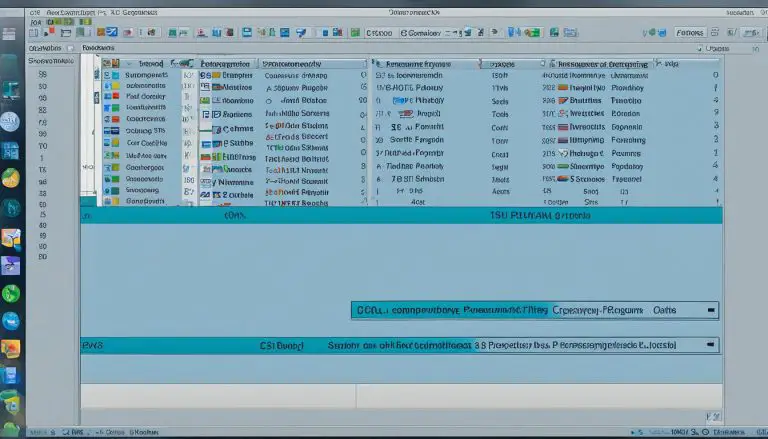What are MIME Types – Explained
A MIME type, or Multipurpose Internet Mail Extension, is a way to classify files on the Internet based on their nature and format. MIME types are used in the HTTP protocol to indicate the type of content being transferred, such as text, images, audio, video, and more. They play a crucial role in web communication as they help web browsers and other applications understand how to process and display different file types. The Internet Assigned Numbers Authority (IANA) maintains a list of official MIME types, which can be referenced to determine the correct type for a given file. It is important for web servers to send the correct MIME type in the response’s Content-Type header to ensure proper interpretation of the content by the client.
Key Takeaways:
- MIME types classify files on the Internet based on their format and nature.
- They are used in the HTTP protocol to indicate the type of content being transferred.
- MIME types help web browsers and other applications understand how to process and display different file types.
- The Internet Assigned Numbers Authority (IANA) maintains a list of official MIME types.
- Web servers should send the correct MIME type in the response’s Content-Type header to ensure proper interpretation of the content by the client.
What is a MIME type?
A MIME type, also known as a media type or Multipurpose Internet Mail Extension, is a way to indicate the nature and format of a document or file being transmitted over the Internet. MIME types are defined and standardized in RFC 6838 by the Internet Engineering Task Force (IETF). They are used to classify data types, such as text, images, audio, video, and more.
The type and subtype of a MIME type are separated by a slash (/), with examples including text/plain, image/jpeg, and application/pdf. MIME types are used by web browsers and other applications to determine how to process and display different types of content.
MIME types play a crucial role in web communication as they help web browsers and other applications understand how to process and display different file types. By specifying the MIME type, the browser or application knows what type of data it is dealing with and can handle it accordingly.
MIME types are standardized and defined in IETF’s RFC 6838, ensuring consistency and interoperability across different platforms and applications. They provide a standardized format for specifying the type of content in a document, allowing for seamless data interchange on the web.
Understanding MIME types is important for developers and administrators who work with web servers, as they need to configure the correct MIME type for each file type to ensure proper interpretation and handling. Incorrect configuration of MIME types can lead to misinterpretation of content by browsers, resulting in display issues or incorrect processing.
In the next section, we will explore the importance of MIME types in web communication and the potential impact of their correct configuration.
Importance of MIME Types
MIME types play a crucial role in ensuring the proper handling and interpretation of file formats on the web. When a browser requests a file from a web server, it relies on the MIME type, not the file extension, to determine how to process the URL.
This dependency on MIME types highlights the importance of correctly configuring the Content-Type header in the server’s response. By providing the correct MIME type, web servers ensure that browsers and other applications can accurately process and display different types of content.
When the MIME type is misconfigured or not set correctly, browsers may misinterpret the contents of the files, leading to incorrect display or functionality issues. For example, a browser might attempt to display an image file as plain text, resulting in a jumbled mess of characters instead of the intended visual representation.
Additionally, mishandling the MIME type can impact the downloading of files. If the MIME type is not properly set, downloaded files may be saved incorrectly or opened with the wrong application.
By using the correct MIME type, web servers ensure that content is correctly processed and displayed by browsers and other applications. This correct configuration ensures a smooth browsing experience for users and prevents any misinterpretation or mishandling of files.
“Properly configuring the MIME type is crucial for web servers to communicate effectively with browsers and ensure content is displayed correctly.”
Structure of MIME Types
Understanding the structure of MIME (Multipurpose Internet Mail Extension) types is essential for proper handling and interpretation of file formats on the internet. MIME types have a specific format consisting of a type and a subtype, separated by a slash (/). Let’s explore the key elements of MIME types:
Type and Subtype
The MIME type structure comprises a general category called the type and a specific kind of data within that category known as the subtype. The type represents the broad classification of the data, such as text, image, audio, or video. On the other hand, the subtype defines further variations within the category. For example, the MIME type text/plain represents plain text, while image/jpeg signifies JPEG images.
Optional Parameters
MIME types can include optional parameters to provide additional information about the content. For instance, the charset parameter is commonly used in text files to specify the character encoding. These parameters enhance the versatility and customization of MIME types, enabling precise handling and interpretation of data.
Case-Insensitive and Case-Sensitive
MIME types themselves are case-insensitive, meaning the capitalization of letters does not affect their recognition. For example, text/plain is equivalent to TeXT/PlAiN. However, the parameter values within MIME types can be case-sensitive. It is crucial to adhere to the correct casing when defining MIME types to ensure compatibility with different systems and applications.
Real-World Examples
Here are some examples of commonly used MIME types:
| Type | Subtype | Example | ||
|---|---|---|---|---|
| Text | Plain |
|
||
| Image | JPEG |
|
||
| Audio | MPEG |
|
||
| Video | MP4 |
|
These examples showcase the combination of type and subtype to represent different file formats accurately.
Understanding the structure of MIME types is crucial for web developers, administrators, and anyone involved in web communication. By adhering to the proper format and parameters, the correct interpretation and processing of content can be ensured.

Common MIME Types
When it comes to different file formats, there are several common MIME types that are widely used on the internet. These MIME types are categorized into two main groups: discrete types and multipart types. Discrete types represent single files or media, while multipart types are used for documents composed of multiple parts or multiple files sent together.
Let’s take a closer look at the common discrete MIME types:
- Application: This MIME type is used for various binary data, such as executables or binary files.
- Audio: It represents audio or music files, such as MP3 or WAV.
- Example: Reserved for use in code examples only.
- Font: It is used for font or typeface data, such as TrueType fonts or OpenType fonts.
- Image: This MIME type is for image or graphical data, such as JPEG, PNG, or GIF.
- Model: It represents 3D model data, commonly used in computer-aided design (CAD) applications.
- Text: Used for text-only data or source code, such as HTML, CSS, or plain text files.
- Video: This MIME type is for video data or files, such as MP4 or AVI.
On the other hand, multipart MIME types are primarily used for sending multiple files or parts together, especially in email scenarios. Two examples of multipart types are:
- Multipart/form-data: This MIME type is commonly used for submitting forms with file uploads.
- Multipart/byteranges: It is used for requesting partial content or ranges of bytes from a server.
Understanding common MIME types and their applications is essential in web development and content delivery, as it allows browsers and other applications to correctly interpret and handle different types of files.
Importance of Correct MIME Types Configuration
Ensuring the correct configuration of MIME types is crucial for proper content processing and security. Browsers rely on the reported MIME type to determine how to handle and display content. If the MIME type does not match the actual file type, browsers may misinterpret the content, leading to incorrect processing or display.
Proper MIME type configuration is especially important for security reasons. Certain file types, such as executable programs, pose inherent risks. Browsers implement restrictions on handling these types of files to protect users from potentially malicious content.
However, if a safe MIME type is incorrectly reported for dangerous content, it can bypass these security measures. This misrepresentation exposes users to the risk of executing harmful files on their computers.
By configuring MIME types correctly, web servers can ensure accurate content processing and protect users from potential security threats.
In case of misconfiguration, the file extensions alone cannot provide browsers with enough information to interpret the content accurately. Therefore, it is crucial to set the correct MIME type in the response’s Content-Type header, which plays a significant role in web communication.
Let’s take a closer look at how MIME types can impact content processing and security when configured correctly and incorrectly:
Correct Configuration
When MIME types are configured correctly, browsers can accurately identify and process various file types. This ensures that content is displayed correctly and that users have a seamless browsing experience.
For example, if a web page contains an image file with the .jpg extension, the server should send the correct MIME type of image/jpeg in the Content-Type header. This allows the browser to interpret the file as an image and display it accordingly.
Correct MIME type configuration also prevents content type misrepresentation. By accurately reporting the MIME type, web servers ensure that browsers handle files appropriately and minimize security risks.
Incorrect Configuration
On the other hand, incorrect MIME type configuration can lead to various issues and security vulnerabilities. Browsers may misinterpret the content, resulting in incorrect rendering or functionality issues.
For instance, if a web server incorrectly sends a MIME type of image/png for an audio file with the .mp3 extension, the browser may attempt to display the file as an image, resulting in a broken or distorted presentation.
Moreover, misconfigured MIME types can have severe security implications. By misrepresenting a safe MIME type for dangerous content, web servers can trick browsers into executing potentially malicious files. This exposes users to the risk of malware infections or unauthorized code execution.
By ensuring the correct configuration of MIME types, web administrators can prevent content misinterpretation, enhance security, and safeguard users from harmful content.
| Impact of Correct MIME Type Configuration | Impact of Incorrect MIME Type Configuration |
|---|---|
| Accurate content processing and rendering | Incorrect content rendering and functionality issues |
| Enhanced security by preventing malicious content execution | Increased risk of malware infections and unauthorized code execution |
| Ensures compatibility across browsers and applications | Compatibility issues and unpredictable behavior |
Conclusion
In conclusion, MIME types play a crucial role in web communication, content interpretation, processing, display, security, and configuration. They allow browsers and other applications to accurately interpret and handle different types of content, ensuring a seamless user experience. By configuring the correct MIME types, web developers and administrators can ensure compatibility, prevent misinterpretation of files, and enhance security by preventing the execution of malicious content.
Web servers should always send the correct MIME type in the response’s Content-Type header to enable proper content handling by browsers. This ensures that files are processed and displayed correctly, without any issues. Furthermore, understanding the structure and importance of MIME types allows for optimal content delivery and user experience on the web.
In conclusion, the correct configuration of MIME types is crucial in web development and administration. It not only enhances the functionality of web applications but also improves security and promotes seamless content interpretation and display. By prioritizing the correct configuration of MIME types, web professionals can ensure a smoother and safer browsing experience for users.
FAQ
What are MIME Types?
MIME Types, or Multipurpose Internet Mail Extensions, are a way to classify files on the Internet based on their nature and format. They are used in the HTTP protocol to indicate the type of content being transferred.
How are MIME Types explained?
MIME Types are defined and standardized in RFC 6838 by the Internet Engineering Task Force (IETF). They classify data types, such as text, images, audio, video, and more, to determine how to process and display different types of content.
What is the importance of MIME Types?
MIME Types play a crucial role in web communication as they help web browsers and other applications understand how to process and display different file types. They ensure proper handling, interpretation, and security of file formats on the web.
What is the structure of MIME Types?
MIME Types consist of a type and a subtype, separated by a slash (/). Examples include text/plain for plain text and image/jpeg for JPEG images. Optional parameters can be included, such as the charset parameter for text files to specify the character encoding.
What are some common MIME Types?
Common MIME Types include application, audio, example, font, image, model, text, and video. Multipart types, such as multipart/form-data and multipart/byteranges, are used for sending multiple files or parts together.
Why is correct MIME Types configuration important?
Correct MIME Types configuration is crucial for proper content processing and security. Browsers rely on the reported MIME type to determine how to handle and display content. Incorrect configuration can result in misinterpretation of files and potential security risks.
Conclusion
MIME Types are an essential aspect of web communication, ensuring accurate interpretation, processing, and display of different types of content. Configuring the correct MIME Types is vital for optimal content delivery and user experience, as well as for protecting against security threats.
Source Links
- https://developer.mozilla.org/en-US/docs/Web/HTTP/Basics_of_HTTP/MIME_types
- https://stackoverflow.com/questions/3828352/what-is-a-mime-type
- https://webplatform.github.io/docs/concepts/Internet_and_Web/mime_types/
- About the Author
- Latest Posts
Janina is a technical editor at Text-Center.com and loves to write about computer technology and latest trends in information technology. She also works for Biteno.com.






